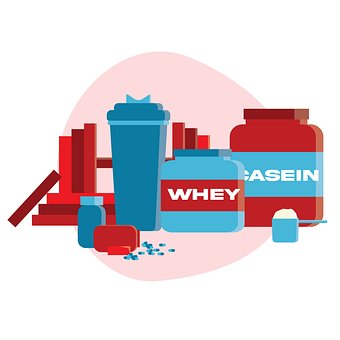
Why is vitamin D called the “sunshine vitamin”?
The most beneficial micronutrient is a fat-soluble vitamin called vitamin D. Vitamin D has two slightly different types, called vitamin D2 and vitamin D3. Sunlight is the prime source of vitamin D. The reaction of sunlight on the skin produces vitamin D3. This is our main source of vitamin D—foods and dietary supplements are less important sources.
Biology of the sunshine vitamin
The skin produces vitamin D from exposure to sunlight. Vitamin D is found in two forms, D2 and D3. D2 is found naturally in sun-exposed mushrooms, while D3 is produced by UVB light from the sun. Humans cannot synthesis D2, but most oil-rich fish such as salmon, mackerel, and herring contain D3. Ingested vitamin D is biologically inert and requires its first hydroxylation in the liver by the vitamin D-25-hydroxylase (25-OHase) to 25(OH)D.1,25 (OH)2D increases the amount of calcium the intestine absorbs. Without vitamin D, the intestine only absorbs 10-15% of dietary calcium and about 60% of phosphorus. Vitamin D increases the amount of calcium and phosphorus the intestine absorbs by 30-40% and 80% respectively.
The presence of the vitamin D receptor in most tissues and cells throughout the body suggests that 1,25(OH)2D has a wide range of biological functions. These functions include inhibiting cellular proliferation, inducing terminal differentiation, inhibiting angiogenesis, stimulating insulin production, inhibiting renin production, and stimulating macrophage cathelicidin production. Local production of 1,25(OH)2D may help regulate the expression of up to 200 genes, which could account for many of the health benefits associated with vitamin D.
Why do we need vitamin D?
There are several important functions of Vitamin D in our bodies. It aids in the absorption of calcium in the intestines, helps to keep bones healthy, and regulates the levels of a hormone called insulin. Additionally, it supports the immune system’s functioning and is known to help the body fight against cancer cells. It also helps with the proper functioning of the heart and brain, and regulates blood pressure.
Vitamin D deficiency: Prevalence
The IOM has defined vitamin D deficiency (VDD) as a 25-hydroxyvitamin D (25(OH)D) level of less than 0.8 IU, and vitamin D insufficiency as a 25(OH)D level of 21-29 ng/mL. VDD is common among pregnant and lactating women who take a prenatal vitamin and calcium supplement with vitamin D, children, and young- and middle-aged adults worldwide, especially in Australia, the Middle East, India, Africa, and South America.
Vitamin D deficiency, why does it happen?
The main source of vitamin D for both children and adults is from exposure to natural sunlight. So, the main reason for vitamin D deficiency is from not getting enough exposure to sunlight. If you wear a sunscreen with a sun protection factor of 30, it reduces the vitamin D synthesis in your skin by more than 95%. People who have a naturally dark skin tone have a built-in sun protection, and need to be exposed to the sun for three to five times longer to make the same amount of vitamin D as someone with a white skin tone. There is a negative association between the serum levels of vitamin D and having a body mass index (BMI) that is greater than 30 kg/m2. So, being obese is associated with having a vitamin D deficiency.
Some patients are at a higher risk for vitamin D deficiency (VDD) due to their medical conditions or medications. These include patients with malabsorption syndromes, bariatric patients, those with nephritic syndrome, and those taking anticonvulsants or medications to treat AIDS/HIV. Patients with chronic granuloma-forming disorders, some lymphomas, and primary hyperparathyroidism are also at an increased risk for VDD due to their metabolism of vitamin D.
Vitamin D deficiency: Consequences
Vitamin D deficiency (VDD) can lead to a number of issues with calcium, phosphorus, and bone metabolism. VDD can reduce the body’s absorption of dietary calcium and phosphorus, which then leads to an increase in levels of parathyroid hormone (PTH). The increase in PTH can then lead to more activity from osteoclasts (a type of bone cell), which can create weak spots in bones and reduce bone mineral density (BMD) overall, thus causing osteopenia and osteoporosis. Additionally, not having enough calcium and phosphorus can cause problems with how bones develop and grow (a process called mineralization), particularly in children. This can cause a number of skeletal deformities, collectively known as rickets. Muscle weakness is another potential effect of VDD; children may have difficulty standing and walking, while older adults may find themselves swaying more often or experiencing more falls, which can lead to an increased risk of fracture.
Groups at risk of vitamin-D inadequacy
It is difficult to get enough vitamin D from food sources alone. Eating foods that have vitamin D in them and being in sunlight are important for having a good amount of vitamin D. Some people might need to take dietary supplements to get the right amount of vitamin D.
Mothers who breastfeed their infants may not be giving them enough vitamin D unless they supplement with high doses of the nutrient, according to the American Association of Paediatricians. The AAP recommends that all breastfed infants should be given 400 IU of vitamin D per day.
As people age, they become more at risk of developing a vitamin D deficiency. This is because older adults’ skin cannot synthesize the vitamin as efficiently, they often spend more time indoors, and they may not get enough of the vitamin in their diet.
Those who don’t get much sun exposure are likely to be deficient in vitamin D. This includes people who stay home a lot, women who wear long robes and head coverings for religious reasons, and people with occupations that limit sun exposure. It’s not clear yet how big of a role sunscreen plays in reducing vitamin D synthesis, but it’s likely that it has some impact. Eating foods and/or taking supplements that contain the RDA level of vitamin D should provide enough of the nutrient for those at risk for deficiency.
People with darker skin need to take in higher levels of vitamin D, as their skin tone means they produce less of the nutrient themselves. However, it’s not known if this has any significant health consequences. Taking in the recommended daily amount of vitamin D from food and/or supplements should be enough for these individuals.
Although vitamin D is fat-soluble and requires some dietary fat for absorption, people with reduced ability to absorb dietary fat might still require vitamin D supplements. Fat malabsorption is associated with a variety of medical conditions, including liver disease, cystic fibrosis, and Crohn’s disease.
individuals with a body mass index (BMI) of 30 or higher, or who have had gastric bypass surgery, may have lower levels of vitamin D than other people. This is because obese individuals tend to have more subcutaneous fat, which captures and stores more of the vitamin, and because gastric bypass surgery means that part of the small intestine where vitamin D is absorbed is bypassed.
Sources of vitamin D
The majority of humans get their Vitamin D from synthesis in the skin from exposure to sunlight, typically between 1000 and 1500 hours during spring, summer, and fall. The Vitamin D produced in the skin lasts significantly longer in the blood than Vitamin D ingested. For example, when an adult wearing a bathing suit is exposed to one minimal erythemal dose of UV radiation (a slight pinkness to the skin 24 hours after exposure), the amount of Vitamin D produced is equivalent to ingesting between 10,000 and 25,000 IU. A variety of factors can reduce the skin’s production of Vitamin D3, including increased skin pigmentation, aging, and the topical application of sunscreen. Additionally, an alteration in the zenith angle of the sun caused by a change in latitude, the season of the year, or time of day dramatically influences the skin’s production of Vitamin D3.
Physiological actions of vitamin D
The primary source of vitamin D in humans is UVB-induced conversion of 7-dehydrocholesterol to vitamin D in the skin. Vitamin D is a fat-soluble vitamin that acts as a steroid hormone and influences the bones, intestines, immune and cardiovascular systems, pancreas, muscles, brain, and the control of cell cycles.
Vitamin D requires two hydroxylations in the body for activation and takes the form of calcitriol (1,25-dihydroxyvitamin D3) when active. Calcitriol has a half-life of 15 hours, while calcidiol (25-hydroxyvitamin D3) has a half-life of 15 days. Vitamin D binds to receptors located throughout the body, with 25(OH)D transformed by renal or extrarenal 1α-hydroxylase into 1,25-dihydroxy vitamin D (1,25[OH]2D). 1,25(OH)2D circulates at a lower serum concentration than 25(OH)D but has a much higher affinity to the VDR. Studies have shown, however, that many other cell types including those of the vascular wall express 1α-hydroxylase which allows for the intracellular conversion of 25(OH)D to 1,25(OH)2D. 1,25(OH)2D has effects at the level of the individual cell or tissue before being catabolized to biologically inactive calcitroic acid.Extrarenal 1α-hydroxylase expression also underlies various regulatory mechanisms. In this context, extrarenal 1,25(OH)2D productions in macrophages are stimulated by Toll-like receptors as part of the innate immune response against intracellular bacteria. Another example of extrarenal regulation of 1α-hydroxylase is that the increased production of 1,25(OH)2D by keratinocytes in wounds, therefore, provides a good estimate of vitamin D status, but regulation of 1α-hydroxylase activity should also be considered.
Drug interactions
Vitamin D supplements can interact with medication in a few different ways. For example, corticosteroids can reduce calcium absorption, which then affects how vitamin D is metabolized. Additionally, since vitamin D is fat-soluble, Orlistat and Cholestyramine can reduce its absorption. To avoid any issues, it’s recommended that these medications be taken several hours apart from each other. Lastly, Phenobarbital and phenytoin increase the hepatic metabolism of vitamin D to inactive compounds and decrease calcium absorption, again resulting in impaired vitamin D metabolism.
Dosing
Only a few foods contain high levels of vitamin D, so most people need to get this nutrient through supplements. Vitamin D is available in capsules, chewable tablets, liquids, and drops. Cod liver oil is a good source of vitamin D, but it is also high in vitamin A, so people should be careful not to take too much.
How can we prevent vitamin D deficiency?
Scientists suggest that sun exposure of 5-30 minutes (to the face, arms, hands, and legs, without sunscreen), is the best way to get vitamin D. The sun exposure should be daily, or at least twice a week, and during the hours of 10 AM and 4 PM. Another way to get vitamin D is through taking supplements. The recommended daily intake of vitamin D3 is 1,000 IU (international units, or 25 mcg). Too much vitamin D is harmful and can cause hypercalcemia (excess of calcium in human body) which in turn can lead to nausea and vomiting.
Now that you know how important vitamin D is for the body, you can take some important steps to make sure you are getting enough, but not too much.














